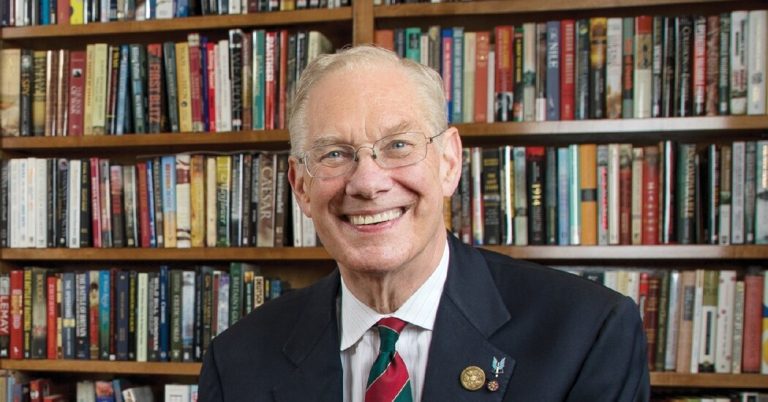V. Craig Jordan, a pharmacologist whose discovery that a failed contraceptive, tamoxifen, could block the growth of breast cancer cells opened up a whole new class of drugs and helped save the lives of millions of women, died June 9 at his home in Houston. It was 76.
Balkees Abderrahman, a researcher who worked closely with Dr. Jordan and was his caregiver for several years, said the cause was kidney cancer.
Dr. Jordan was known as a meticulous, even obsessive researcher, a quality that was demonstrated in his work on tamoxifen. The drug was first synthesized in 1962, although it was discarded after it not only failed to prevent conception but, in some cases, promoted it.
But Dr. Jordan, then still a PhD student at the University of Leeds in Britain, saw something no one else did. Estrogen has long been known to promote the development of breast cancer in postmenopausal women – and it was suspected that tamoxifen might help stop it.
Cancer of all kinds has long been viewed as an invincible enemy, treatable only with blunt, dangerous tools like chemotherapy. But the early 1970s saw a new wave of research, fueled in part by President Richard M. Nixon’s “war on cancer” campaign, that over the next 30 years would lead to a revolution in oncology.
Dr. Jordan was a leader in that revolution. Over decades of research, he was able to show that tamoxifen, when given to early-stage breast cancer patients, stopped the tumor from growing by blocking its estrogen receptors. It was, in his words, “anti-estrogenic.”
Approved by the Food and Drug Administration first for use against late-stage breast cancer in 1977 and then for use against metastatic breast cancer and as a preventive measure in 1999, tamoxifen was the first in a new class of drugs called selective estrogen receptor modulators. This and other drugs are now prescribed to women around the world and are credited with helping millions of patients.
Tamoxifen is not perfect. It works in 65 percent to 80 percent of postmenopausal patients and only 45 percent to 60 percent of premenopausal patients. And Dr Jordan was the first to reveal that it led to a small increase in the risk of one type of uterine cancer — although he argued that the benefits for breast cancer patients were still overwhelming.
In 1998, Dr. Jordan, in collaboration with Stephen R. Cummings, an aging expert at the University of California, San Francisco, showed that another estrogen-blocking drug, raloxifene, improved bone density in postmenopausal women and reduced the risk of breast development. cancer up to 70 percent.
Dr. Jordan was in many ways an old-school researcher. He insisted that a drug should be investigated for all its potential applications, not just those that might make money or be the fastest to market. And he believed scientists should be transparent about side effects, even if that meant reducing a drug’s appeal. He called his work “conversations with nature”.
Virgil Craig Jordan was born on July 25, 1947 in New Braunfels, Texas. His British mother, Cynthia Mottram, and his American father, Virgil Johnson, had met while his father was serving in England during World War II and then returned home to Texas after the war.
They divorced soon after Craig was born and he and his mother moved into her home in Bramhall, near Manchester, where he grew up. She later married Jeffrey Jordan, who adopted Craig as his son.
By his own account, Craig was an average student. The only subject he excelled in was chemistry, a passion his mother encouraged by letting him set up a laboratory in his bedroom.
“Experiments often got out of hand, so a steaming drink was thrown out the window onto the lawn below, leaving the curtains on fire,” he wrote in the Endocrine Journal in 2014. “Of course, the lawn died.”
Given his poor grades, he assumed he would go straight from high school into the workforce, perhaps as a lab technician at a nearby factory run by Imperial Chemical Industries (which is now part of pharmaceutical giant AstraZeneca).
But his mother leaned on his teachers to give him another year of study to prepare for college and he managed to win a scholarship to Leeds University. degree in 1969, Ph.D. in 1973 and a PhD in 1985, all in pharmacology.
He also joined the University Officer Training Corps, after which he served in the British Army and its reserves until mandatory retirement at 55 — most of the time with the elite Special Air Service, roughly equivalent to the US Navy SEALs.
While at Leeds, he began working on tamoxifen, an interest he took with him through a series of positions at various institutions: the Worcester Foundation for Experimental Biology in Shrewsbury, Massachusetts; the University of Wisconsin; Northwestern University; the Fox Chase Cancer Center in Philadelphia; Georgetown University; and, beginning in 2014, the MD Anderson Cancer Center at The University of Texas at Houston.
Dr. Jordan’s three marriages ended in divorce. He is survived by two daughters from his first marriage, Alexandra Noel and Helen Turner, and five grandchildren.
He was diagnosed with Stage 4 kidney cancer in 2018, a shocking outcome that he nevertheless spoke about openly — and that he fought for and overcame in the final years of his life.
“I’m in a state of flux, but I’m not afraid of dying,” he told the ASCO Post, an oncology publication, in 2022. “I was the person who probably never made it to 30 with the stupid things I did. I did in my youth.”




